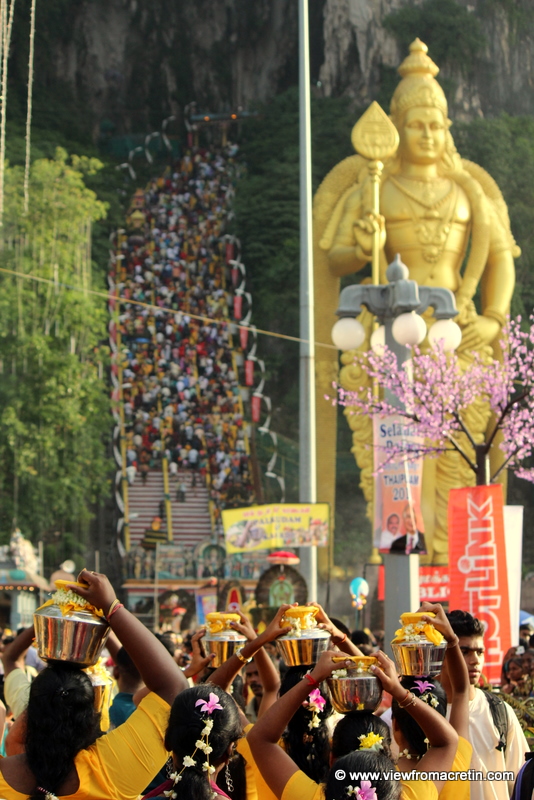
BAKING IN A TIN CAN TRAM
I was absorbed into the densely packed multitude during this early hour, crowding onto the waiting platform in the tunnel of a train station in Kuala Lumpur, Malaysia. Excitement permeated the air as bodies mingled impatiently, eargerly anticipating the arrival of the next train. The dark tunnel to our left started to glow with light; soon we heard the sounds of metal wheels creaking against metal tracks. The train slowly crawled to a halt, the doors opened with a whoosh, and the disorderly wave of bodies trying to get in to the train fought against the few attempting to disembark. We crammed into each other, waddling in small steps like penguins trying to enter the car, then contorting our bodies to let just one more person try to wedge himself in. The doors slid shut, we collectively exhaled like a bag of candy settling, and the train teetered off down the track towards its final destination about an hour away: Batu Caves. Most of the passengers surrounding me were of Indian descent, and they were headed to the sacred and spectacular festival of Thaipusam.
LEGEND GIVES RISE TO SACRED CELEBRATION
Thaipusam, a Hindu festival marking the victory of good over evil, has its origins in the legends of Lord Shiva, his wife the goddess Parvati, and their son, the Hindu god Lord Muruga. One particular legend asserts that Lord Muruga, upon being besieged by a demon army, was gifted a vel, or lance, by Parvati that assisted him in his defeat of the Tarakasura (Asura) demon army. This legend of victory over evil has morphed into a day of thanksgiving for modern-day worshipers. Participation in the festival comes about by virtue of the devotee looking to offer thanks to the god for a blessing, or in answer to a prayer. Usually that prayer involves wishing for a sick relative to recover, requesting to be granted children, or for help overcoming an important obstacle in one’s life. The devotee gives thanks in the form of a kavadi (offering), which consists of pots of milk, coconuts, or fruit pierced to the subject’s body. This fruit is usually orange or yellow, the colors associated with Lord Muruga. The devotees dress in clothing bordering on flamboyant, if it weren’t right in step with normal Indian attire, mostly involving an orange or yellow-gold (saffron) color scheme. Another symbol associated with Lord Muruga are peacock feathers, which are seen in abundance during the Thaipusam festival.
Thaipusam is observed once a year, during the 10th month of the Hindu calendar, the Tamil month Thai. This corresponds to the time between January 15 and February 15 in the Gregorian calendar.
Although observed around the world, the most extravagant and grandiose Thaipusam celebrations occur wherever there is a large concentration of Southern Indians, such as Singapore, South Africa, and Sri Lanka. The fervent and hugely popular celebration at Batu Caves just north of Kuala Lumpur, Malaysia, has become world-renowned. The climax is a three-day celebration beginning at Sri Mahamariaman Temple in Chinatown and concluding at Batu Caves. The evening before the first day of the festival, worshipers begin a 15km journey from Chinatown to Batu Caves, with an image of Lord Muruga, usually adorned with jewels, leading the procession.
Batu Caves, one of the most famous Hindu shrines outside India, are thought to be roughly 400 million years old. The Thaipusam festival was first celebrated at Batu Caves in 1892. Like a weightlifter on steroids, the processions have become bigger and grander year after year, to the point where the location of Batu Caves is now bulging at the seams when the festival is at its height. The cave entrance, located midway up the mountain, was initially accessible via a series of wooden steps built in 1920. Those wooden steps were later replaced with more stable concrete steps, and at their base now stands the world’s largest statue of Lord Murugan. At 140 feet heigh, the imposing gold statue glitters in the light of the intense equatorial sun, beckoning pilgrims to begin the journey upward into the cave structures and the temple of Lord Muruga nestled within.
A FAMILY AFFAIR
Thaipusam is a family affair, and the celebration and subsequent offering is honored by the entire family. At Batu Caves I saw entire family members performing the festival’s required events.
I watched as devotees, upon reaching the area surrounding Batu Caves, first cleansed themselves in the river at the base of the hills. Some devotees then had their heads shaved, and some men had their beards shaved as well. I wandered from tent to tent, each belonging to a different family, and observed rituals being performed by the family priest. The priest would bless each member individually, marking their forehead, then concluding by smashing a flaming coconut. This symbolized the annihilation of the ego and an act of humiliation on the participant, who might have felt self-righteous regarding the achievements up to Thaipusam. This act of total submission to god now complete, the participants began their final journey towards Batu Caves.
I witnessed some devotees being blessed by a priest as incense was burned, and then subsequently going into a trance-like state. This trance occurred shortly before the subject was given their kavadi (offering). I stood by as some devotees had their tongue pierced by a miniature vel, a skin-tingling moment, while others had the vel pierce them from cheek to cheek. Often times that vel contained a fruit such as a lime on each end. This piercing of the vel is meant as a symbolic reminder to the devotee regarding Thaipusam, in which Lord Murugan was given a vel by Parvati to help vanquish evil. The tongue and cheeks are also pierced in order to curb the devotee’s speech, thus maintaining an aura of silence in order to meditate more purely.
The kavadi and devotees bearing this kavadi takes on another deeper meaning. The bearing of the kavadi is seen as a penance or thanks to Lord Muruga, but also allows the inner spiritual nature to awaken via the trance-like state, which is seen as the path or means that leads to a supreme state of devotion. The subject’s earthly, or worldy, wish has been granted, and now as a means to become closer to their god they are blessed, bear their kavadi, and begin their penance up Batu Caves to the offering spot.
I witnessed some cases where the kavadi included the adornment of many brass bells. Since the devotee is observing silence, sometimes forcefully via the vel that has been pierced through their tongue or cheeks, this is the only means by which to announce their approach. Many kavadi-bearing-devotees will also adorn themselves in dress similar to a Pandaram, which is a Hindu mendicant of the Sudra or a low-caste Hindu priest. This dress includes a cloth of golden-yellow, a conical scarlet cap, and a cane.
I followed behind at a respectable distance as an entire family, having been blessed and bearing their kavadi, began the trek from the river towards Batu caves only a short distance away. Upon reaching the base of the caves, I hung back and watched as they started to climb the 272 steps up to Cathedral Cave. At this climactic spot, they would give their offering to the image of Lord Muruga, offering it up as thanks for the answer to their prayers. The mass of devotees processing to the steps and beginning the ascent is a sight few festivals in the world can match.
Upon the completion of their offering, the devotees made their way back down the steps of the cave and back towards the river. Here they cleansed themselves again via a shower, and their yearly devotion at Thaipusam was fulfilled.
DANGERS COME TO LIGHT
Recently there has been some backlash regarding Thaipusam at Batu Caves. As Thaipusam grows more popular with the masses, some cry out that the true meaning is being forgotten, while others see it as an opportunity to make money or as a means to show their devotion in extreme or untraditional ways. The accumulation of trash during the event is another major issue. No matter the individual preference, it seems that Thaipusam and its signficance will never subside, but only evolve with the changing times.
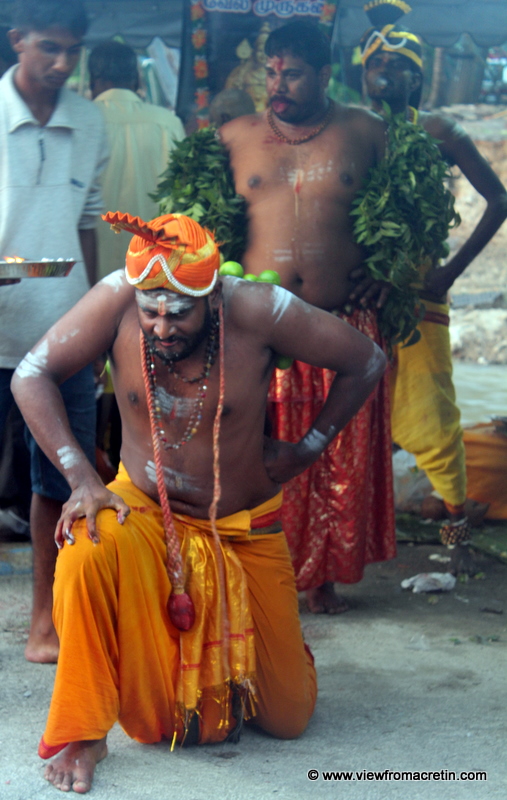


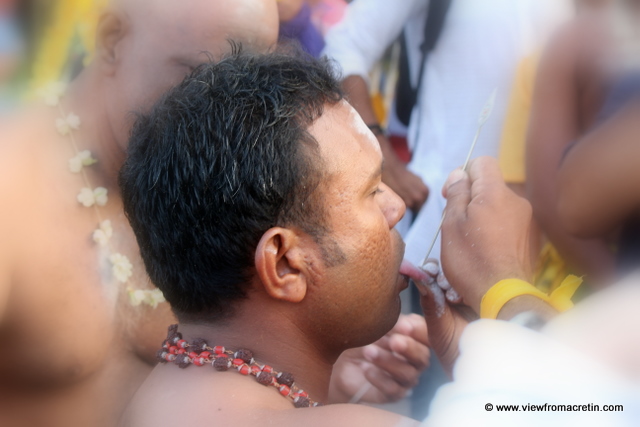
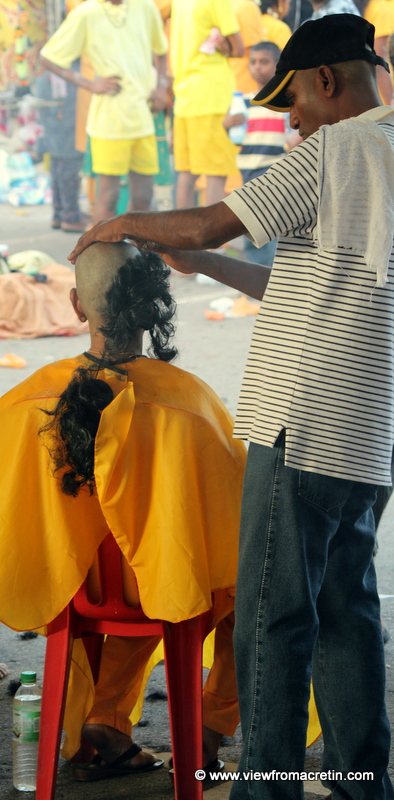
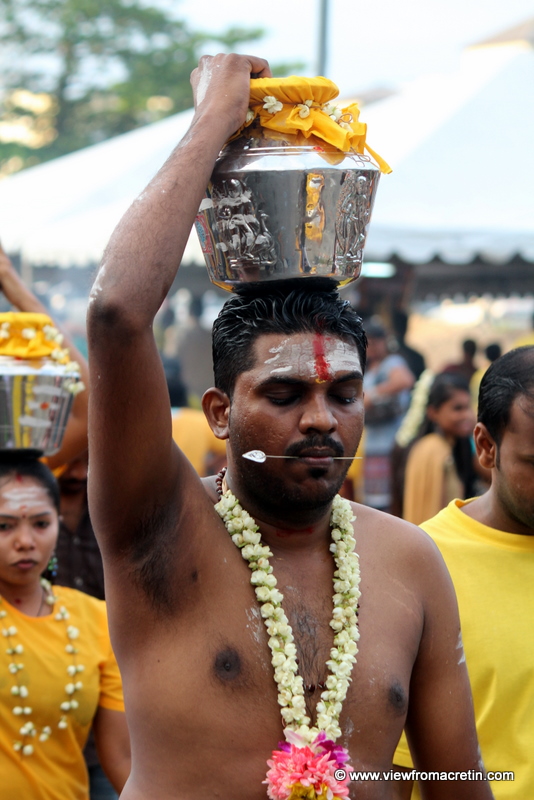

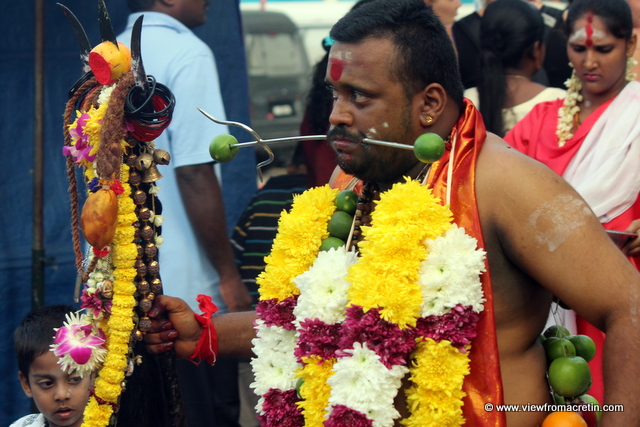
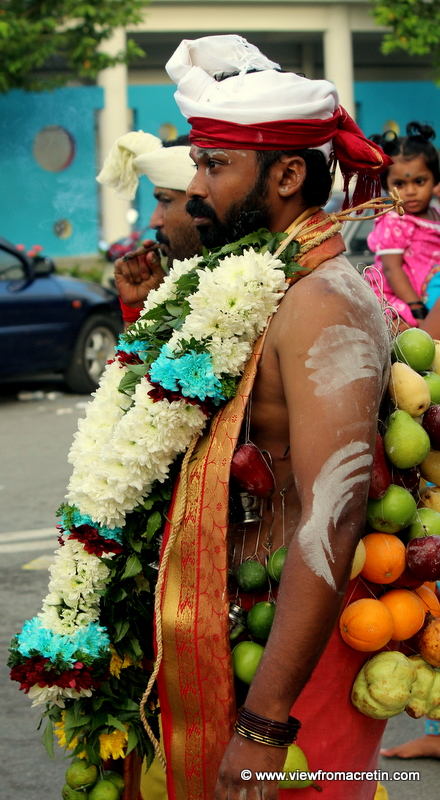
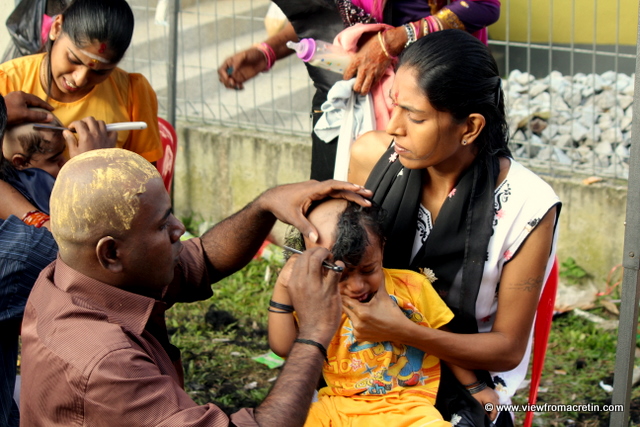
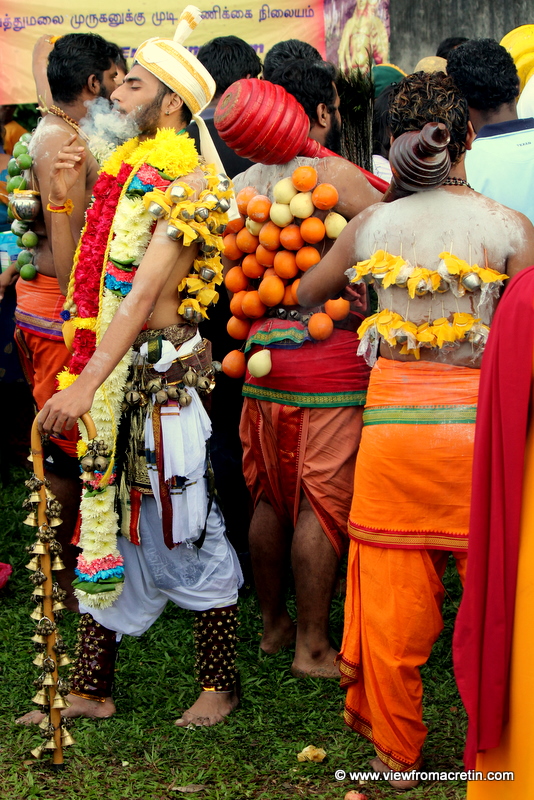
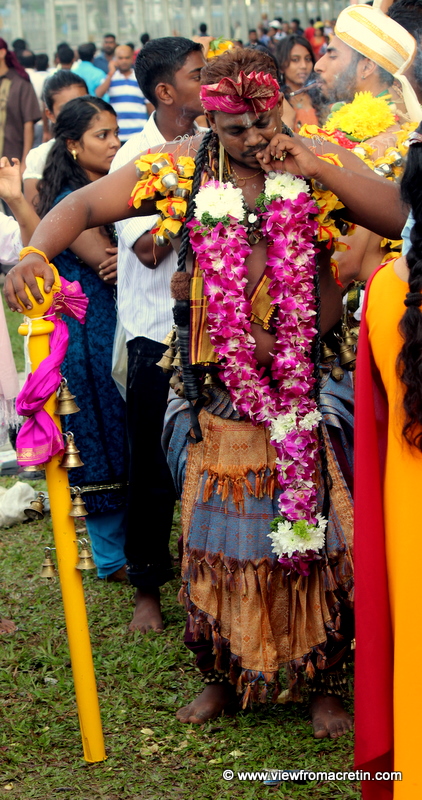

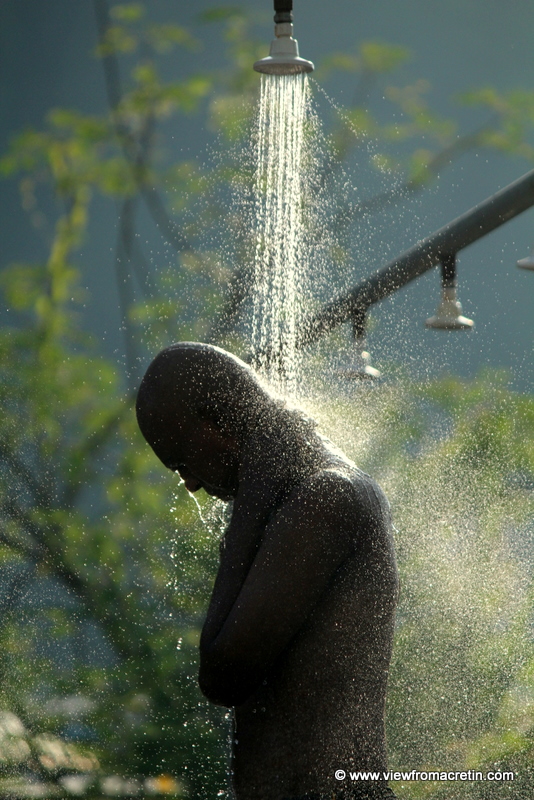
You can have all those countries. I”ll stay here in our country.
That brought to mind to me an interesting question I will have to ask other long-term backpackers/travelers. If somebody told you that you must choose between these two options which would you choose: to stay in your own country but never be able to travel anywhere else in the world or to be able to travel all over the world but never be able to return to your home country?